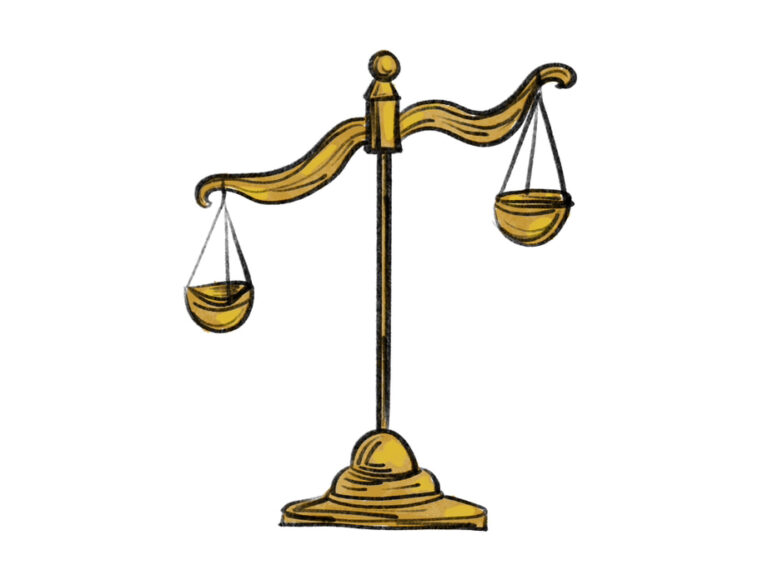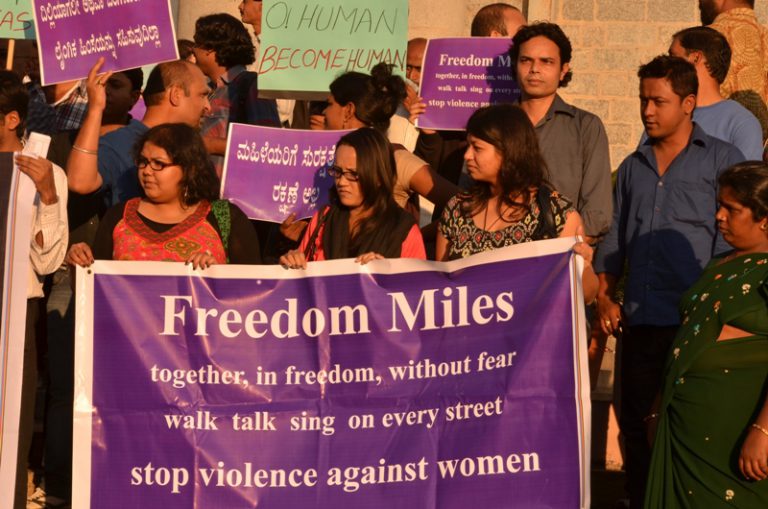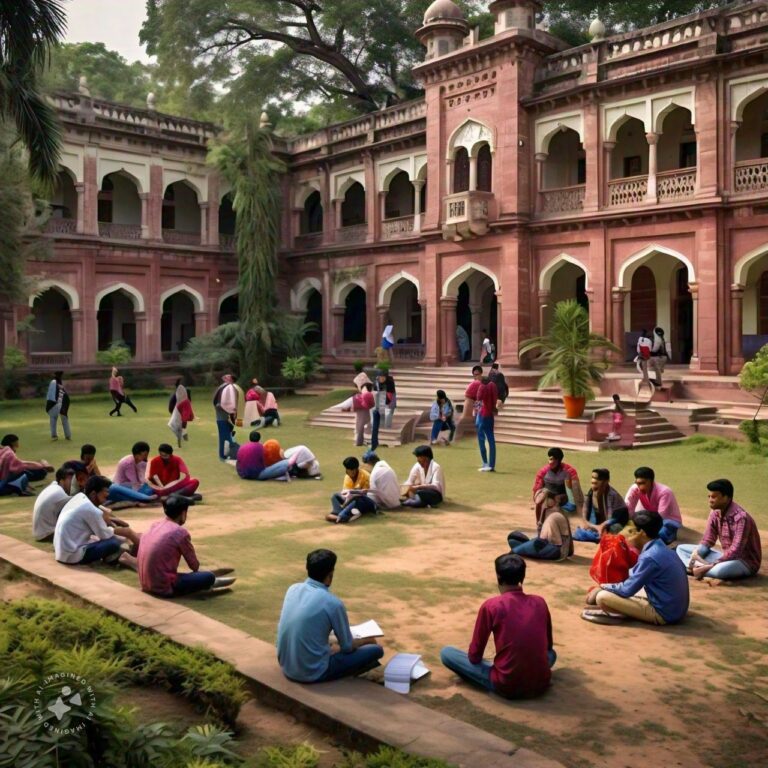Indian federalism and the changing times

“Federalism isn’t about states’ rights. It is about dividing powers to better protect individual liberty.”
Elizabeth Price Foley
The outbreak of the Covid-19 pandemic has claimed thousands of lives and thwarted a ‘normal lifestyle’ for billions in nations across the world. The crisis has triggered a ‘litmus test’ moment for Indian Federalism. In this context, the piece outlines the opportunities it has presented, the manifold challenges associated with the same, and how far has the Indian State successfully transformed ‘challenge into opportunity.’ Undoubtedly, a curious paradox of a ‘Globalised World and Federalised Politics’ is undeniable. On the one hand, the world is reeling under the impact of a global pandemic: COVID-19, a development that has suddenly derailed globalized connectivity. On the other hand, the domestic political response has been increasingly federalized, involving cooperation between the Centre and the States.
‘Federalism is the compound mode of Government combining a general government with regional/ provincial governments in a single political system.’ This piece would attempt to understand the changing dynamics of Federalism in times of the COVID-19 crisis. Politics is a perennial, everflowing river changing its course and dynamics subject to time, space, and conditionalities. So, it is crucial not only to look at the structure of the constitution but also at the practice of it to attempt a comprehensive understanding of the Indian polity and federalism in current times. Scholars including Subrata.K.Mitra have envisaged Federalism as reconciliation between ‘self-rule’ and ‘shared rule’ where there is not only division of powers but eventually a trickledown effect to empower the last person in the line within the folds of democratic governance. What does the current situation hold for the prospects of such an understanding of Federalism? A nuanced analysis has been my sincere attempt.
Covid-19 and the Indian Trajectory
The trajectory deserves a close look. India reported its first COVID case on 30th January 2020 from Kerala. And, ever since, the curve seems upward despite some fluctuations and state-wise variations. Mid- March saw the issuance of closure orders for educational institutions, restaurants, hotels, and a strict ban on public gatherings. International and domestic flights came to a halt, and even the Indian Railways created history by remaining inoperative for the longest duration since Independence. The ‘Janata Curfew’ on 22nd March marked the inception of a journey- long, uncertain, and yet bound by the values of ‘humanitarianism’ and ‘solidarity’ for the greater good. A five staged ‘lockdown’ followed in keeping with ‘social distancing’ norms, and the journey seems far from over, with a long and difficult haul ahead.
Changing Centre-State Equations
Trends of three decades of Coalition Politics underwent a notable transformation with a one-party government assuming office in 2014 for the first time since 1984 and scripted history with over 300 seats in the 2019 General Elections. The shift towards centralization was evident with states ruled by Opposition parties alleging discrimination and authoritarianism on part in the Centre. Have there been any exceptions in the COVID Era, and are the states more powerful than they seemed to be a few months back?
The nationwide lockdown never seemed a ‘consensus-based decision’ in the initial stages, with only states like Maharashtra and Punjab implementing strict curfew restrictions. Delhi was the first to close educational institutions in the first week of March, followed by Karnataka, which had imposed restrictions on public gatherings even before a nationwide lockdown was declared. Public health is a subject in the State List, but given the Global Pandemic, a national approach was much desired. Prime Minister Narendra Modi’s televised address on March 24, 2020, announcing a nationwide lockdown, brought the nation to a standstill. Invoking the Epidemic Diseases Act, 1897, which states like Karnataka, Kerala, and Odisha had already invoked and the National Disaster Management Act, 2005, which provides the Centre with magnanimous powers to arrest the spread of the disease, the decision seemed unilateral on the part of the centre. Later a number of states joined the bandwagon, including the North-Eastern states where the situation has been safer compared to their counterparts.
The Centre and the States finally decided to bury the hatchet for a common cause triggered by the outbreak of the pandemic. Indian federalism seemed to take a conciliatory approach manifested in the video conferences hosted by the Prime Minister with the Chief Ministers, the latest being held on 11th May 2020. A plethora of Inter-Governmental and Inter-Departmental meetings was witnessed at different levels of the Government, including the local bodies. ‘Minimisation of political differences’ is a landmark development achieved only sparingly in the Indian political landscape characterized by stiff electoral competition. Working in a collective and coordinated manner involving both the centre and the states has yielded results, and India’s response mechanism against the deadly novel Coronavirus has been widely praised, including by the World Health Organisation (WHO).
The Federal Tensions
Nevertheless, the grey spots and dark blots ought not to be overlooked. The entire country had been mapped into red, orange, and green zones. In this regard, disagreements are bound to surface with every state calling for considerable autonomy in the handling of the pandemic and deciding the parameters for zone demarcation. Past experiences have demonstrated how guidelines and directives issued by the Centre and vigilance by Central Agencies and teams have ‘irked’ state leadership in some opposition ruled states who have conceived such actions as a blow to the ‘federal structure.’ Disputes over COVID Data have further contributed to a tug of war between the Centre and States. The Governor’s ‘apolitical office’ has recently stirred fresh controversy in the states of Maharashtra and West Bengal, precipitating a crisis. The chaotic inter-state movements of large numbers of migrant laborers have certainly reflected the failure to chart out a joint plan by the centre and the states. The onus is on both to effectively mitigate the sufferings of the economic migrants through proper coordination in ‘times of crisis.’ These are the areas where the scope lies to transform the ‘challenge into an opportunity.’
At the district level, Bhilwara in Rajasthan, Agra, and Kushinagar in Uttar Pradesh and several districts in Kerela have done a commendable job in conducting large scale testing and door to door campaigns to bring the growth rate of Covid-19 under control. A ‘PM-CM-DM’ equation is clearly playing an instrumental role in all three levels of governance. From the right to life, liberty, and property, the Government moved to secure second and third generation of rights for its citizens, but the Covid-19 crisis has pushed it back to the pavilion. ‘The Right to Life’ has once again assumed supreme importance. As the unlocking begins after a prolonged shutdown, it needs to be taken care of that ‘A one size fits all policy’ wouldn’t yield the best results, and it ought to be flexible and state/ district specific in the best interests of the people under the centre’s watch.
Dynamics of Fiscal Federalism
In times when India battles COVID-19, the significance and the crisis of ‘Fiscal Federalism’ is only ascendant. The States see the Centre as a ‘repository for financial aid and assistance.’ The Centre also continues to play a critical redistributive role in such matters. The Health Sector, including Research in Medical Sciences, has relatively become a priority for government expenditure.
Experts have commented that from the United States to India, the pandemic scenario has undoubtedly strained federalism. Coming to fiscal federalism, the Indian Constitution certainly provides us with some clues. Articles 268 – 293 under Part XI dealing with center-state relations with respect to fiscal provisions shows that the States has exclusive jurisdiction over the collection of State GST, the lucrative duty on liquor, tax from agriculture and for the rest depends on aid provided by the Centre. A Micro-Analysis would definitely point to the harsh realities where the States are in a dire financial crunch to meet their immediate expenditures, including health facilities. The nationwide lockdown implied a stop to the sale of liquor, thereby depriving the States of a major source of revenue.
The rural distress would also need the states to have significant relaxations in the collection of land revenues and repayment of farmer loans. Justice KM Joseph had hailed the introduction of the GST Regime as a ‘revolutionary chapter in the history of Indian federalism. But now at this hour of crisis when overall tax collection has taken a hit, the States look forward to a GST Compensation, which the Centre is yet to release. In a recent article, it has been highlighted that states such as Karnataka (Rs 8000 crore), Punjab (Rs 4000 crore), Kerela (Rs 3000 crore) and Maharashtra (Rs 16,600 crores) have huge GST dues which are making even payment of salaries difficult without Central intervention.
With the BJP at the Centre and a number of opposition parties ruling at the state level, the decision to suspend the MPLAD Funds for a period of 2 years has been slammed by the Opposition as a unilateral stand to ‘Centralise Funds’ and detrimental to the autonomy and powers of elected representatives. Such unilateral steps of the centre without consulting the State governments can worsen the situation. Nevertheless, the maturity displayed by the political leadership on both ends is indeed welcome in some areas. Always ‘demonizing the centre as Shylock’ is not the solution to our present woes. Every Government has fiscal constraints, and besides aiding the States, the Centre has its own schemes and packages to fund. Similar complaints have even surfaced with the local bodies alleging the State Government’s non-committal attitude towards ensuring fiscal autonomy at the grassroots.
Empowering local self-governance is imperative to the success of Fiscal Federalism in India. The informal and agricultural sectors which hold the key to economic recovery have been apparently one of the focal points of the ‘Atmanirbhar Bharat’ package announced by the Centre.
But the package could well emerge as a source of tension between the centre and the states with time concerning provisions for loans over grants from the centre. But, it is time for the leadership to realize that the Centre and States ought not to ‘scramble’ for funds. But rather, effective and coordinated fund transfer to the needy should be the sole objective for both the democratically elected government at the central as well as at the state level. The local bodies- Municipalities and Panchayats will inevitably have a decisive role to play in providing relief at the grassroots for the successful implementation of the package. In a country where demands are unlimited, and resources are limited, COVID 19 would undoubtedly compel greater federal cooperation for successfully undertaking an arduous journey.
Roadmap for the Future
The framers of the Constituent Assembly had envisioned Indian federalism as a ‘Strong Centre but not weak states.’ In an era of ‘cooperative federalism,’ states are to be the partners in nation-building. Leadership and well as policy implementation seem to be the foundation of federal dynamics during any crisis of such massive proportion. One must be reminded that though separation of powers is a tenet of ‘India’s Living Constitution,’ their territories of operation and the interests of the electorate overlap. Any remedial strategy in response to the COVID-19 crisis ought to be people-centric. Deeper insights will only point to the reality that federalism is not just a normative doctrine; it is a ‘procedural necessity’ for achieving ‘larger substantive goals.’ The COVID-19 experience has vindicated this stance.
“No train runs without an engine. Moreover, the real job is to lay the tracks”. In the context of Cooperative Federalism, the Double Engine, which comprises both the Centre and the States, ought to run in synchronization to make things happen. ‘Saving Lives and Restarting Economic Growth in a phased manner’ poses a dual challenge in the current scenario. The writing on the wall is bold, clear, and unambiguous. ‘A proactive role for the Centre coupled with constructive partnership from the states’ seems to have emerged as the ‘mantra for nation-building’ in the new evolving India of the 21st century!!
Featured Image Credits: Wikimedia









Soumyadeep’s article highlights political science’s interest in the distribution of authority and cooperation between central and state governments in context of COVID crisis. The article quite aptly describe about the ruling dispensation at the Centre, which has pronounced its commitment towards ‘cooperative federalism’ must be the lynchpin around such a cooperative framework amongst States, that can be devised. In this regard, the existing institutional mechanisms like Inter-State Council which has remained largely moribund can be rejuvenated during this crisis. But above all, sincere and immediate repudiation of political hoodwinking and opportunism by all stakeholders will be instrumental is shaping the trajectory of relations between the Centre and the States during this crisis. A thought provoking article by a brilliant young voice of India indeed.
Very well written after a research is what is really good and the vision to have a strong India with central Govt.as the pivot but equal importance and collaboration from the states coming from such a young man is commendable.Wish the youth join hands to teach this lesson to the erring politicians.
Nicely Penned down. Each bit of it has a ground reality & a vast inner meaning which demonstrates the real facts & figures about the current scenario & a clear vision about the restoration.
A hearty congratulations to this Young voice of India & a request to All Youngsters to follow his footsteps….
Well explained!! Commendable effort to narrate the status quo of our country. Every bit of it reflects the facts. The young writer envisages a new India with ‘Minimum political differences’ and ‘strong Centre – State relationship’ as the only ‘mantra for nation building’. This should be the voice of the young generation of our country
Great job soumodeep!!.Your piece reflects your mammoth grip over Indian politics and the present economic scenario.It was an arduous undertaking for a young man like you.Proud of you dear!!.The data is highly informative making it crystal clear for everyone to demarcate between right and wrong.If the young generation follow your footsteps with the centre and the state moving hand in hand ,then definitely the motto of”saving lives and restarting economic growth “can be realised orelse very soon the world will enter the darkest phase of the business cycle …. DEPRESSION
Soumodeep is very well versed in political Science and extremely informative about present Indian Economy. I could gain ample knowledge about the right and wrong. “Saving lives and restarting Economic growth ” is the key to build up a prosperous India in future. God bless the young writer and let many more Indian youth follow his foot steps.
Very well written. Hats off to this man. This article not only reflects the facts, but also guides us to determine the right one and the wrong one.
Nicely Penned down. Each bit of it has a ground reality & a vast inner meaning which demonstrates the real facts & figures about the current scenario & a clear vision about the restoration.
A hearty congratulations to this Young voice of India & a request to All Youngsters to follow his footsteps….